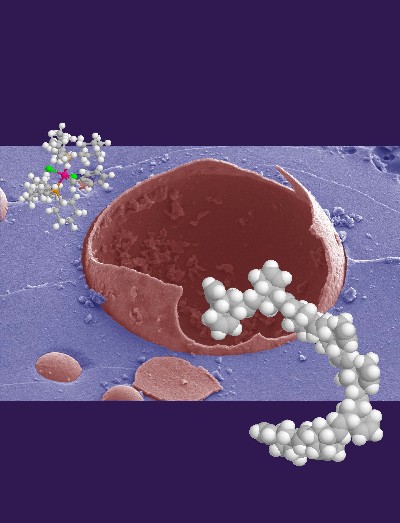How Self-healing Spacecraft Will Work

When you cut yourself, it’s amazing to watch how quickly your body acts to mend the wound. Immediately, your body works to pull the skin around the cut back together. If you have a scar, you can see the evidence of our bodies’ self-healing power. Scientists are now developing a new type of composite material that will give those same self-healing qualities to spacecraft.
If humans plan to travel far into space and to interstellar planets, new advanced materials will be needed for spacecraft construction. One weakness of current composite materials is that they tend to form tiny hairline cracks, which will cause major damage over time. In February 2001, researchers at University of Illinois at Urbana Champaign announced that they have developed a new synthetic material that will heal itself when cracked or broken.
This new smart material and other technologies like it could be the first step in building a spacecraft capable of traveling millions of miles from Earth, where repairs won’t be easy to make. In this edition of How Stuff WILL Work, you will learn about this new self-healing composite and electronics system that analyzes and fixes itself before problems become too great.
Damage to a spaceship’s hull often begins as tiny surface cracks, which are invisible to the eye. These micro-thin cracks can also form underneath the surface of the material, where they are hidden from sight. Once these cracks form, they will grow until the material weakens and breaks. In order to prevent these tiny cracks from spreading, a new material has been developed that will sense damage and mend itself instantly. This self-healing ability could significantly prolong the life of the spacecraft.
There are three parts to this new self-healing material:
Composite material – The bulk of the material is an epoxy polymer composite. Polymer composites are advanced materials that are made from carbon, glass or Kevlar and a resin, such as epoxy, vinyl ester or urethane.
Microencapsulated healing agent – This is the glue that fixes the microcracks formed in the composite material. This healing agent is a fluid called dicyclopentadiene, or DCPD. This fluid is encapsulated tiny bubbles that are spread throughout the composite material. There are about 100 to 200 capsules per cubic inch. Photo courtesy University of Illinois Scanning electron microscope image of a ruptured microcapsule.
Catalyst – In order to polymerize, the healing agent must come into contact with a catalyst. A patented catalyst, called Grubbs’ catalyst, is used for this self-healing material. It is important that the catalyst and healing agent remain separated until they are needed to seal a crack.
When a microcrack forms in the composite material, it will spread through the material. By doing so, this crack will rupture the microcapsules and release the healing agent. This healing agent will flow down through the crack and will inevitably come into contact with the Grubbs’ catalyst, which initiates the polymerization process. This process will eventually bond the crack closed. In tests, the self-healed composite material regained as much as 75 percent of its original strength.
The market for this kind of self-healing material goes far beyond spacecraft. Approximately 20 million tons of composite material is used every year for engineering, defense projects, offshore oil exploration, electronics and biomedicine. This self-healing material will show up in many everyday items, including polymer composite circuit boards, artificial joints, bridge supports and tennis rackets.



 Creators of mankind
Creators of mankind Description of “Tall white aliens”
Description of “Tall white aliens” Where they came from?
Where they came from? About hostile civilizations
About hostile civilizations The war for the Earth
The war for the Earth “Tall white aliens” about eternal life
“Tall white aliens” about eternal life Video: “Nordic aliens”
Video: “Nordic aliens” Aliens
Aliens Alien encounters
Alien encounters The aliens base
The aliens base UFO
UFO Technology UFO
Technology UFO Underground civilization
Underground civilization Ancient alien artifacts
Ancient alien artifacts Military and UFO
Military and UFO Mysteries and hypotheses
Mysteries and hypotheses Scientific facts
Scientific facts


















